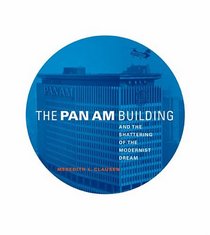Search -
The Pan Am Building and the Shattering of the Modernist Dream
The Pan Am Building and the Shattering of the Modernist Dream
Author:
Winner, Trade Illustrated Category, 2006 AAUP Book Jacket and Journal Show. and Received an Honorable Mention in the Architecture & Urban Planning category of the 2005 Professional/Scholarly Publishing Annual Awards Competition presented by the Association of American Publishers, Inc. — The Pan Am Building and the reaction to it signaled t... more »
Author:
Winner, Trade Illustrated Category, 2006 AAUP Book Jacket and Journal Show. and Received an Honorable Mention in the Architecture & Urban Planning category of the 2005 Professional/Scholarly Publishing Annual Awards Competition presented by the Association of American Publishers, Inc. — The Pan Am Building and the reaction to it signaled t... more »
ISBN-13: 9780262033244
ISBN-10: 0262033240
Publication Date: 12/1/2004
Pages: 497
Rating: ?
ISBN-10: 0262033240
Publication Date: 12/1/2004
Pages: 497
Rating: ?
0 stars, based on 0 rating
Publisher: The MIT Press
Book Type: Hardcover
Other Versions: Paperback
Members Wishing: 1
Reviews: Amazon | Write a Review
Book Type: Hardcover
Other Versions: Paperback
Members Wishing: 1
Reviews: Amazon | Write a Review
Genres:
- Engineering & Transportation >> Architecture >> Criticism
- Engineering & Transportation >> Architecture >> General
- Engineering & Transportation >> Architecture >> Individual Architects & Firms >> Gropius, Walter
- Engineering & Transportation >> Architecture >> Regional >> United States
- Reference >> Architecture
- Engineering & Transportation >> Architecture >> Buildings >> General




